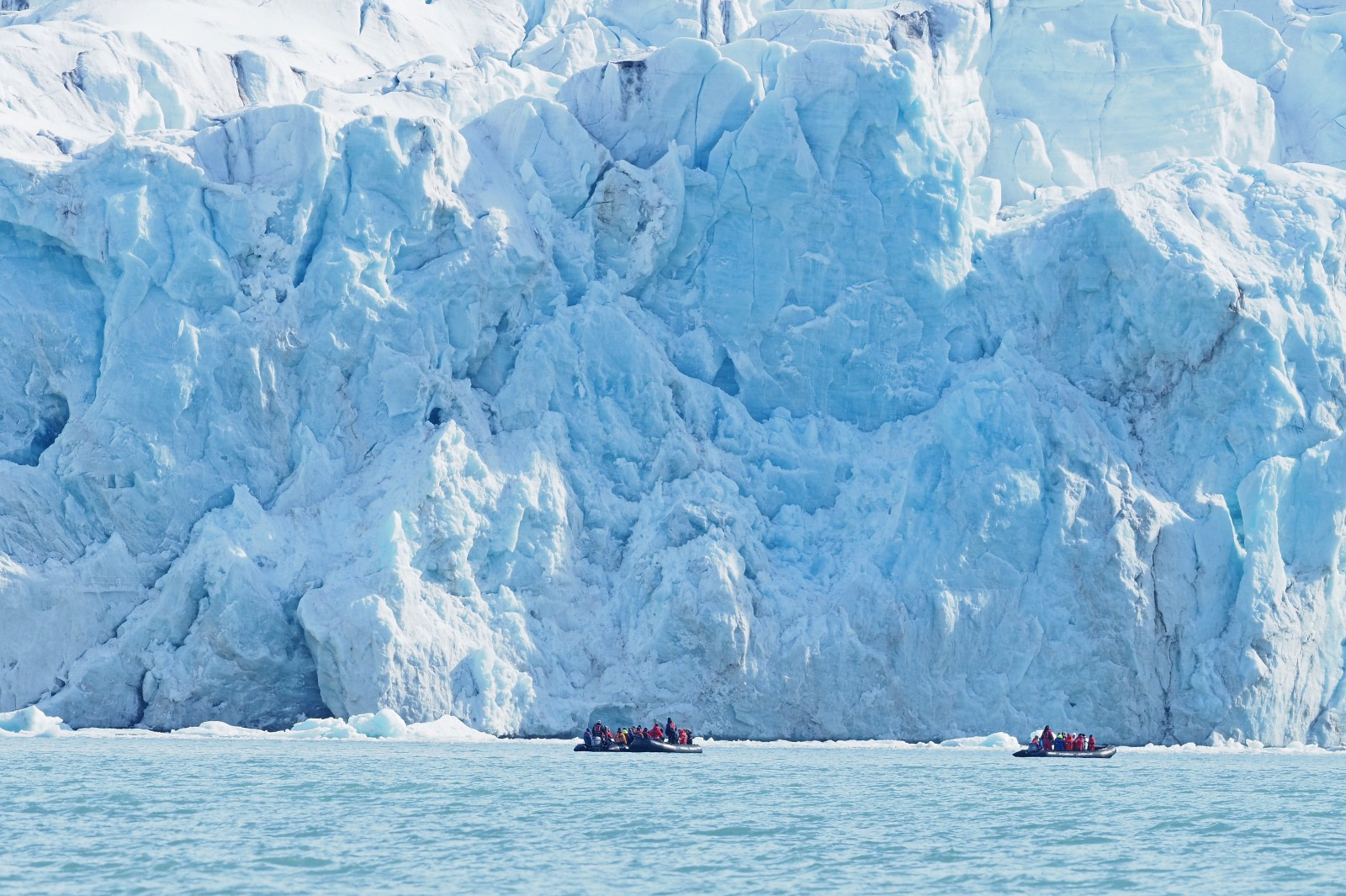Arctic and Antarctic glaciers, icebergs, and other ice trivia
Glaciers and icebergs represent two of the most important facets of Earth's ecosystem. The glaciers, icebergs, ice sheets, and permanent areas of snow in the polar regions (the Arctic and Antarctica) comprise 1.7% of the total water on the planet. That might not seem like much, but keep in mind it includes all the saltwater in the oceans too.
Still, glaciers and icebergs are far more vital than even this statistic indicates.
These ice formations of the Arctic and Antarctica also account for 68.7% of the world's freshwater supply, which means that most of the potable water living organisms need to survive comes from glaciers and icebergs.
And in addition to their ecological importance, knowing more about glaciers and icebergs makes seeing them in person all the more awe-inspiring.
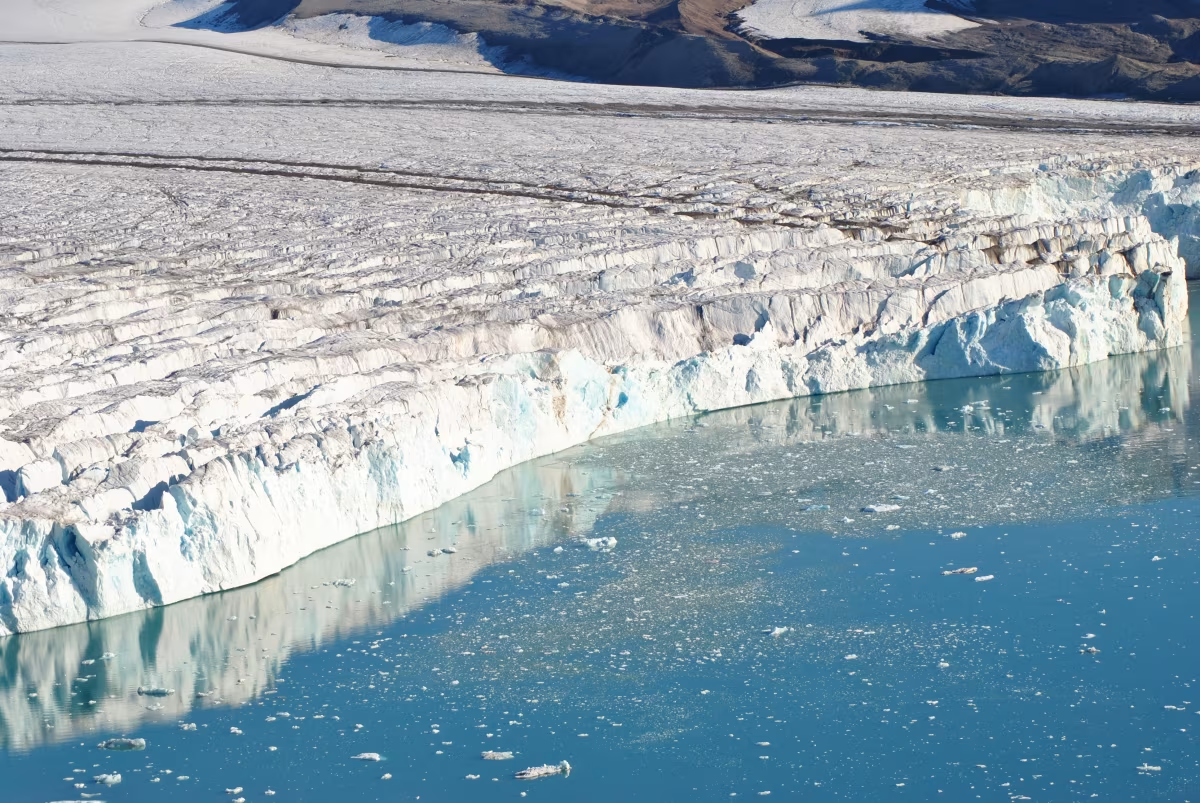
Picture by Jamie Scherbeijn
What really is the difference between glaciers and icebergs?
No, it's not a Seinfeld bit. It's actually a very common question.
Glaciers are large sheets of ice that can extend for miles. Larger glaciers are referred to as continental glaciers, which start at a central point and spread out as they accumilate more ice and other debris like dirt and rock. Glaciers are located in the Arctic and Antarctica, with the largest glaciers appearing in Antarctica.
Icebergs, on the other hand, are smaller pieces of ice that have broken off (or calved) from glaciers and now drift with the ocean currents. Icebergs calve from glaciers when direct sunlight or rising air temperature cause the glacier's surface ice to become more brittle. Only the larger continental glaciers create icebergs, as it typically does not happen that a mountain glacier releases an iceberg into the sea.
For more on the specific mysteries of glaciers, see our detailed secret life of glaciers entry.

Picture by Mark Vogler
The underrated importance of icebergs and glaciers
Another reason glaciers and icebergs are vital to the rest of the planet is because glaciers continually grow and release icebergs into the Arctic and Antarctic seas. Those icebergs then follow ocean currents and wind up feeding some of the larger rivers and lakes in the world.
Without glaciers and icebergs, many of those critical rivers and lakes would dry up.
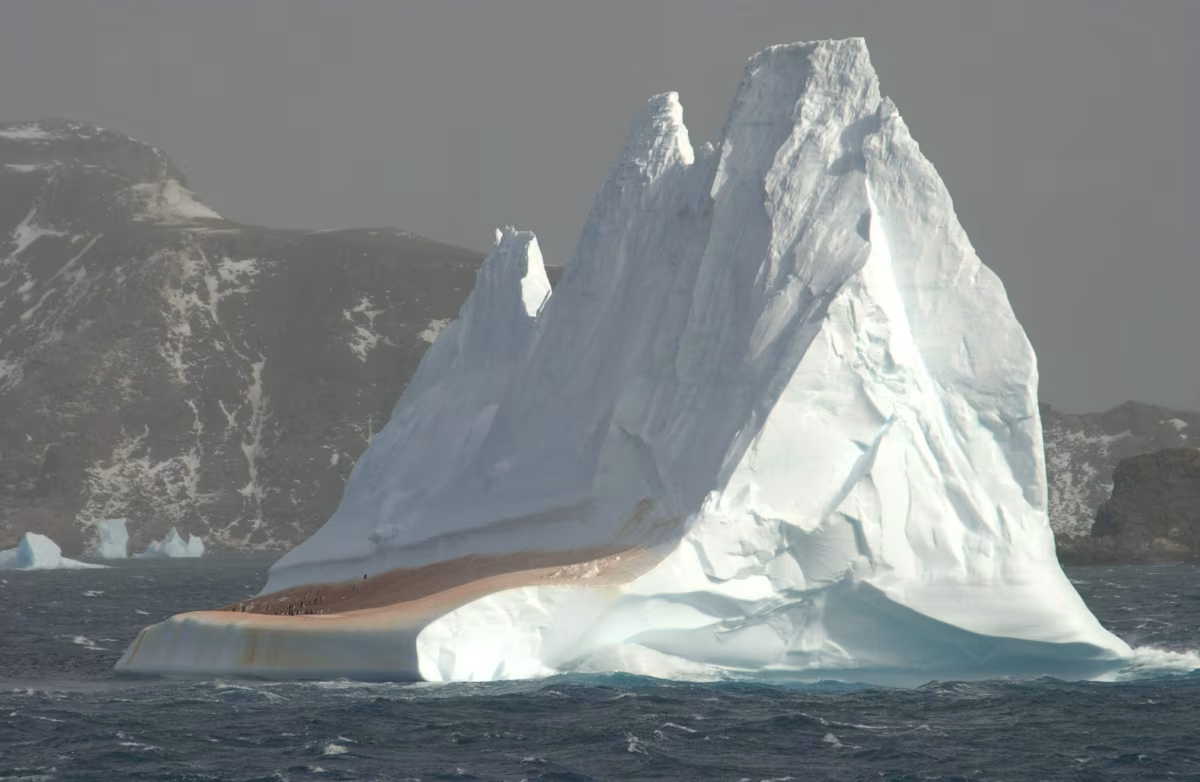
How glaciers and icebergs contribute to quence your thirst
The majority of Earth's water is saltwater, which is undrinkable. But as mentioned, glaciers and icebergs are primarily fresh water. This makes them a valuable commodity for bottled water companies.
Also as mentioned, the rivers and lakes that glaciers and icebergs feed provide additional drinking water for bottling companies. So next time you drink from a plastic bottle rather than the tap, you might have the Arctic or Antarctica to thank for the privilege.
You can thank them best by recycling that plastic.
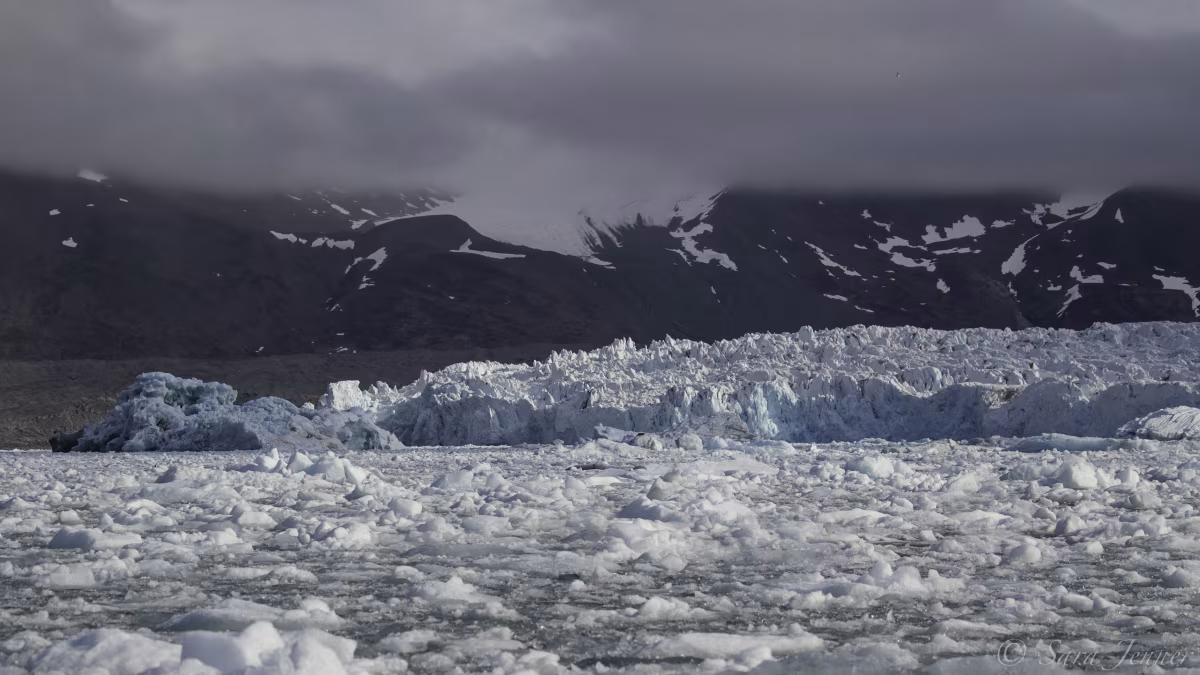
Tip of the iceberg (not just an Arctic or Antarctic saying)
Have you ever heard someone say, "The tip of the iceberg"?
This comes from the fact that most of an iceberg (about 90%) is submerged and cannot be seen. Also, icebergs melt from the bottom up instead of the top down, which means you never know quite how much more iceberg is concealed underwater.
This has been a huge issue for shipping vessels, obviously, and was a contributing factor in the famous sinking of the Titanic in 1912.
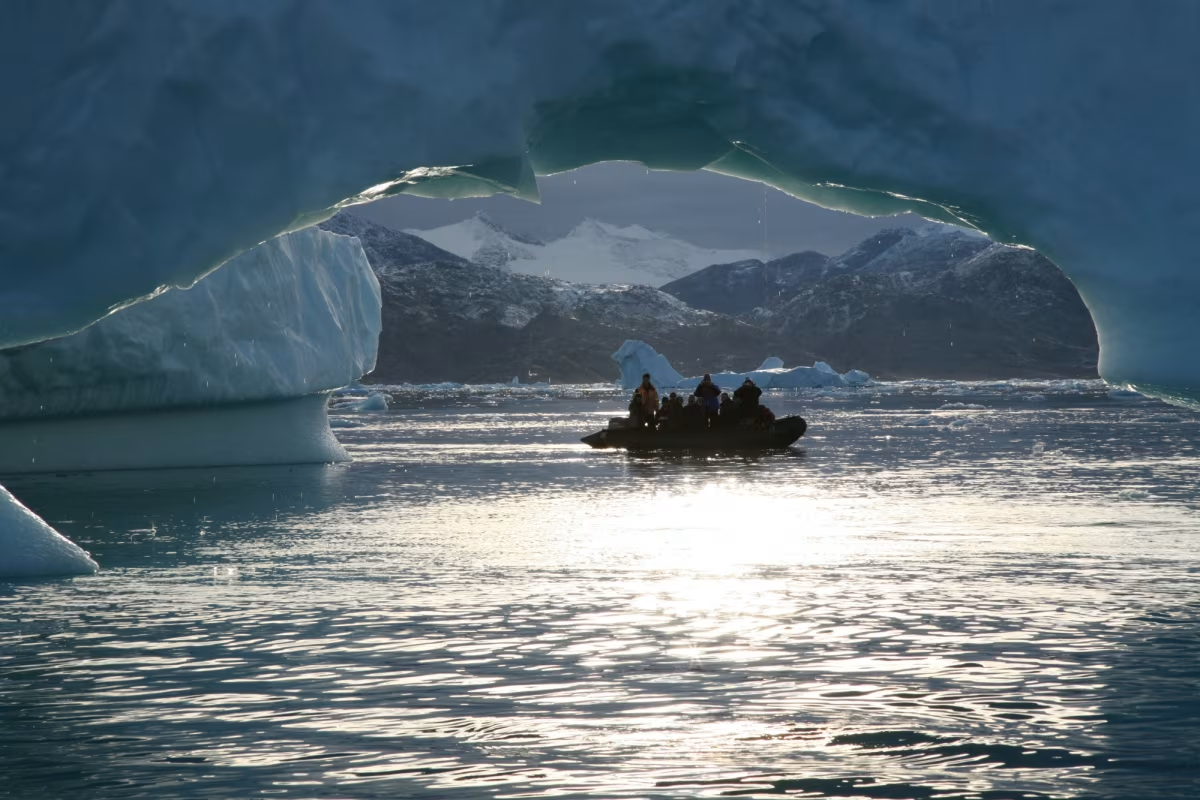
How Arctic and Antarctic glaciers get their colorful texture
As glaciers grow, they accumilate sediment from the ground and volcanic materials from the air. (Both the Arctic and Antarctica have experienced a great deal of volcanic activity over Earth's history, and many of their islands are volcanic.)
Glaciers also develop pockets of color that vary from the rest of the ice. This vibrant phenomenon is caused by ice on the surface of the glacier temporarily thawing and then freezing again. This creates the colorful streaks in glaciers that are then passed on to icebergs, an attractive highlight of both Antarctica cruises and voyages to the Arctic.
Along with an iceberg's color streaks, the melting and refreezing on the surface of an iceberg can create caves and contours that are just as colorful.

Explore the glaciers and icebergs of Antarctica and the Arctic
When you head out on an Arctic trip or expedition cruise to Antarctica, you won't be able to help noticing how beautiful and multiform these regions' glaciers and icebergs are.
Each area has its differences, of course: Antarctica's glaciers tend to be much larger than glaciers of the Arctic, and the Arctic's icebergs are usually more jagged and irregular in shape than icebergs found in Antarctica.
Nonetheless, both areas offer glaciers and icebergs that are true expressions of their environment. Though not as permanent, these amazing ice formations are just as fascinating as any geological formation.
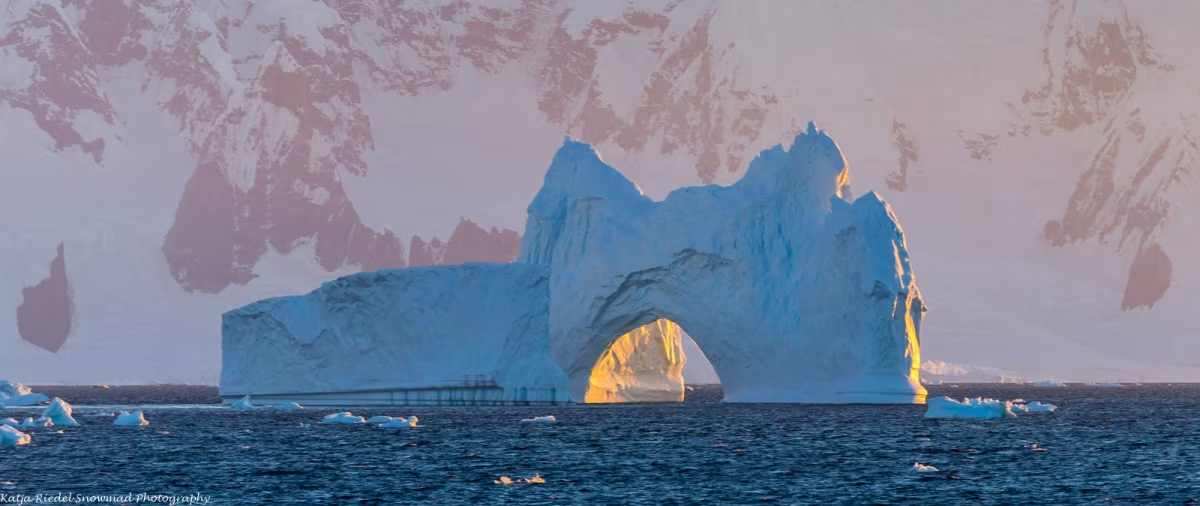
Picture by Katja Riedel
Main image by Melissa Scott
